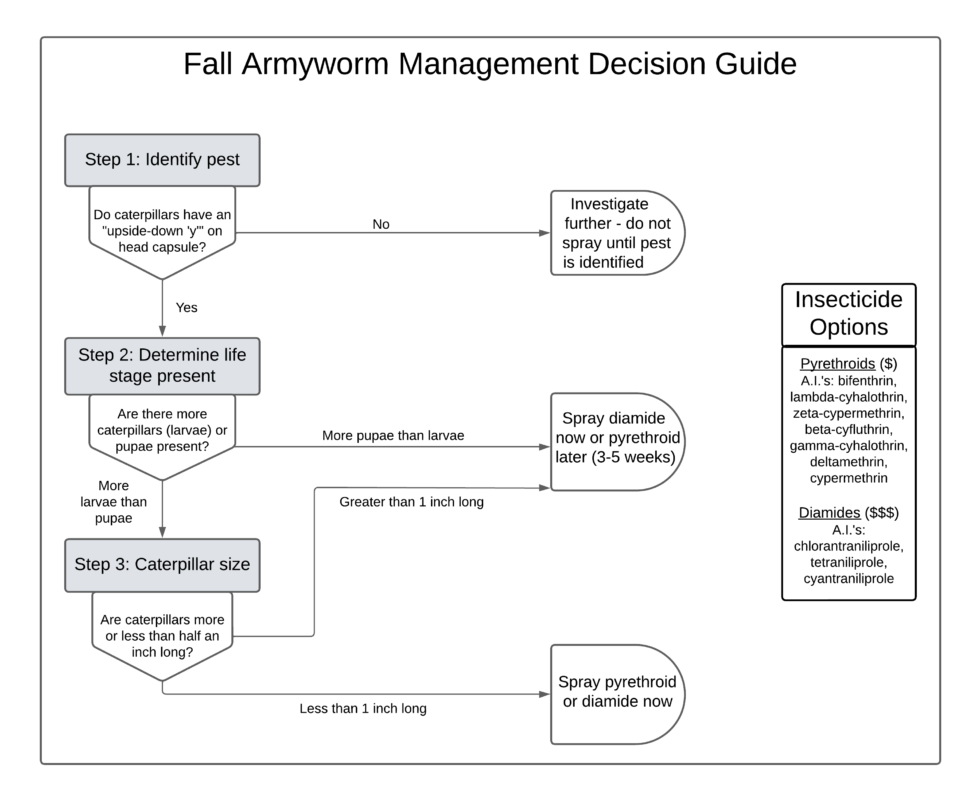Fall Armyworm Management Decision Guide
Use the infographic below to determine the best options for fall armyworm management. Starting on the top left side, navigate through the three steps to decide on the appropriate product for control. Be sure to go through each step in order! See below the figure for additional information.

Step 1: Identify the pest
Examine the turf canopy to see if you can find fall armyworms crawling across the surface during the day. If not, you can apply a soapy water flush or cut a section of the turf to find what is causing the damage. If you find caterpillars, do they have an “upside-down ‘y'” on the head capsule? If not, you need to investigate the source of damage further. Do not apply an insecticide until you have determined what is causing the damage. If the caterpillar has the “y” marking, proceed to Step 2.
Step 2: Determine the life stage present
Once you have determined that fall armyworms are to blame, cut a small section of the turf and examine the top two inches of the soil profile. If you see more pupae (red-brown, inch-long capsules) than larvae (caterpillars), apply a diamide product (see “Insecticide Options” key for list of active ingredients) now or a pyrethroid product in 3-5 weeks. If you find more larvae (caterpillars) than pupae, proceed to Step 3.
Step 3: Caterpillar size
Get an approximate measurement of the length of a larva. If it is greater than one inch in length, apply a diamide product now or a pyrethroid product in 3-5 weeks. If it is less than one inch in length, you can spray a pyrethroid for a “quick-knockdown” that will not provide a long window of protection (1-2 weeks maximum) or apply a diamide that will take a few days to work but will provide several weeks of protection.
*REMEMBER: Use liquid formulations whenever possible, regardless of pesticide selection